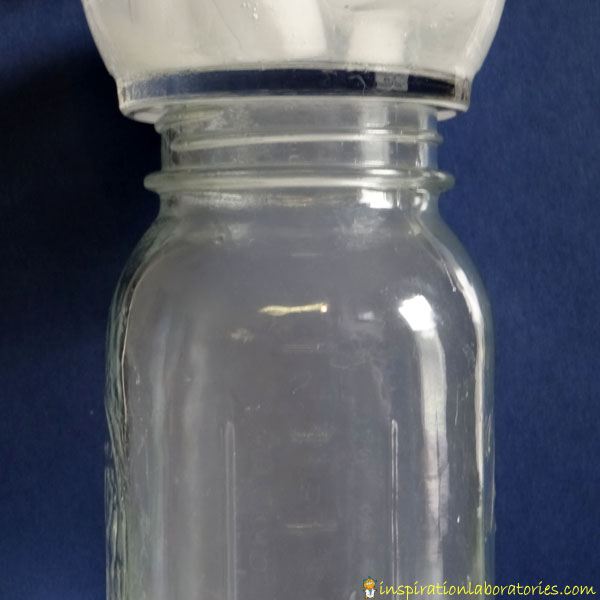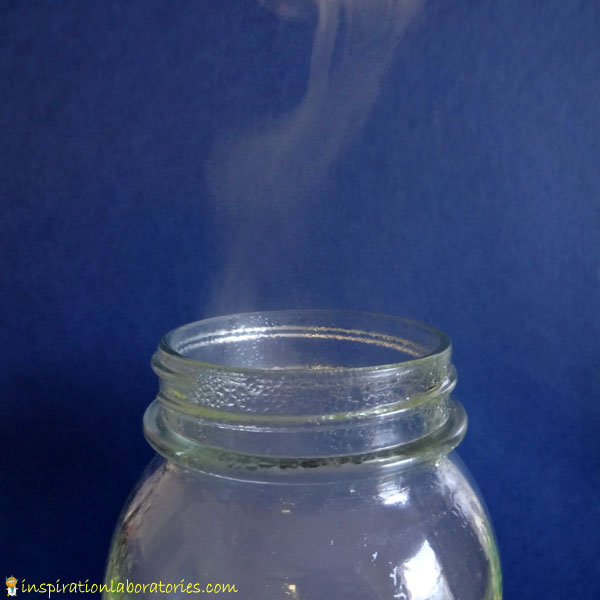Science at Home: Make a Cloud in a Jar
Learn about weather with some activities that make science at home fun. Clouds are interesting and mysterious to kids. What are they made of? How do they form? Make a cloud in a jar to show the process.
Make a Cloud in a Jar
Materials:
- glass jar
- lid to the glass jar or small bowl/plate to cover the jar
- hot water
- ice
- air freshener, hairspray, or other aerosol spray
Instructions:
**Use caution when dealing with hot liquids and containers. An adult should pour the hot water.
- Warm up the glass jar by rinsing it with warm tap water.
- Add about 1-2 inches of hot water to the glass jar. {I tried using hot tap water. The water temperature was about 115 °F. This water temperature did not make a cloud for us. I heated the water in a tea pot and waited until it was bubbling – before it whistled. The water temperature was about 145 °F. Cooler temperatures of about 130 °F worked for us, too.}
- Put ice in a small bowl/plate/or upside down jar lid and place the bowl on top of the glass jar.
- Add a quick spray of air freshener or hairspray to the jar. Lift the ice bowl, spray, and quickly replace the bowl. {Try to spray the air freshener or hairspray into the middle of the jar. If you hit the side of the jar, a cloud might not form.}
- A cloud will form inside the jar as soon as you place the bowl of ice on top.

- Lift the bowl of ice and let the cloud escape. What does it feel like?
I completed all of the above steps myself. Aiden just watched. If you are comfortable with it, older children may be able to lift and replace the bowl of ice or spray the air freshener/hairspray.
The Science Behind It
Clouds in the atmosphere form in a very similar way as our cloud in the jar. First, clouds need water vapor. This was provided as the hot water evaporated into the jar. Next, clouds need cooling. As the water vapor rises, the air in the atmosphere is cooler. This causes the water vapor to condense. The last thing a cloud needs to form is a surface to condense upon. Small particles called cloud condensation nucluei fill this role. In the atmosphere, these particles could be dust, smoke, air pollution, soot, sea salt, sulfate, and more. In our cloud jar, the aerosol spray served as the cloud condensation nuclei.
Science at Home – Weather
Here’s the fifth episode in our Science at Home series co-hosted with Maggy from Red Ted Art and Life at the Zoo and others.
More Science Fun
- Watch our 4th episode in the Science at Home series and take on our kitchen chemistry challenge.
- The A to Z Science series for toddlers and preschoolers. Easy science activities to do with young children. I include some background info and questions to get you started.
- Try these experiments perfect for toddlers and preschoolers.
- Join the Science for Kids Community on Google+. Share your hands-on science activities and be inspired by others.
Linking up here.




Leave a Reply